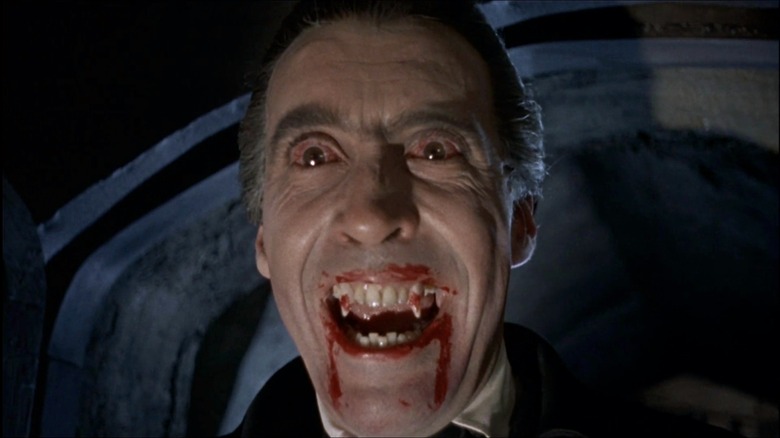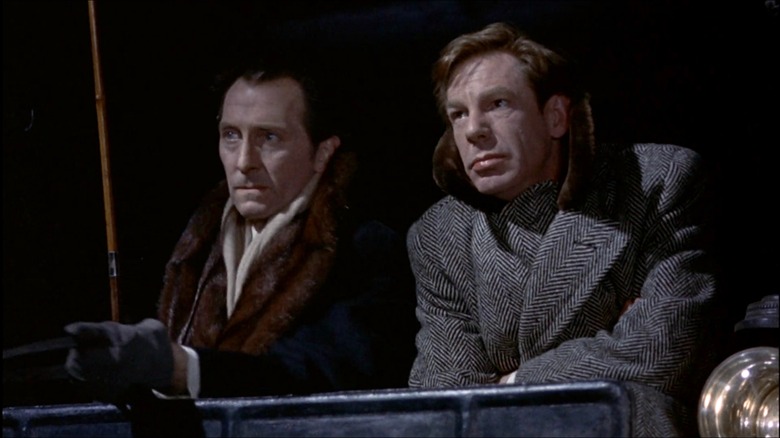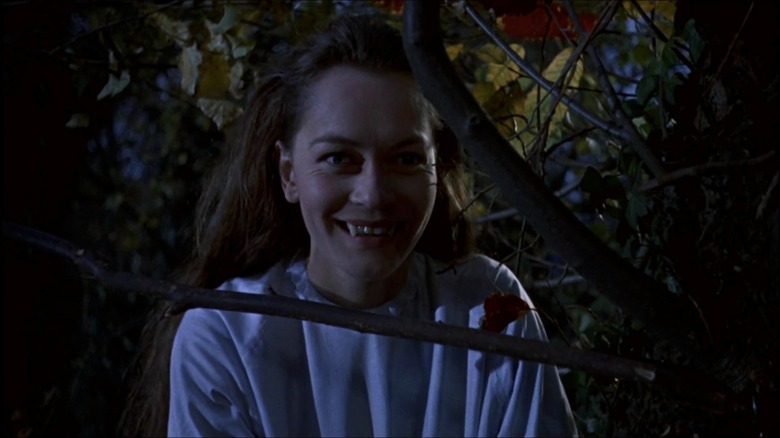Year Of The Vampire: In Horror Of Dracula, Christopher Lee Gave The Genre Its First Real Teeth
When cinephiles think Dracula, there are any number of actors whose faces might come to mind, from Bela Lugosi to Gary Oldman or even the more recent Claes Bang, who ushered in the 2020s with a three-episode miniseries on Netflix and BBC One. Bang certainly wasn't the first gent to star in a British adaptation of Bram Stoker's foundational vampire novel. Perched halfway between Lugosi and Oldman was the Hammer Horror reign of Christopher Lee, who played Count Dracula in seven films across 15 years from 1958 to 1973.
To put this in perspective, Lee played Dracula for Hammer for the same length of time that Daniel Craig played James Bond for Eon Productions. And he starred in an additional three films outside the Hammer oeuvre, bringing his total number of Dracula appearances up to 10, twice as many as Craig had with Bond. That's not even counting his cameo in an 11th film, which features as an honorable mention on some lists.
21st century viewers may associate Lee with his role as the wizard Saruman in the "Lord of the Rings" and "Hobbit" trilogies, but to a whole generation of filmgoers, he was Dracula. Likewise, Peter Cushing was better known as the vampire hunter Van Helsing before he ever played Grand Moff Tarkin in the first "Star Wars" movie (or was digitally resurrected, rather like a Disney vampire, in "Rogue One: A Star Wars Story"). Even Michael Gough, who co-starred as Alfred the butler in all four of the Tim Burton and Joel Schumacher "Batman" movies, was part of the same Hammer Horror gang with Lee and Cushing, first.
The point is, all your favorite modern franchises drew from the acting well of Hammer's 1958 "Dracula" film adaptation, often referred to by its U.S. title, "Horror of Dracula." This is where Lee first spread his vampire bat wings, figuratively speaking. (He would turn into an actual bat in later movies.)
What it brought to the genre
In a word: teeth. Onscreen, the traditional image of vampire fangs (as opposed to Count Orlok's rodent-like incisors) didn't really exist until the 1950s. "Horror of Dracula" is what mainstreamed them after they first appeared in a lesser-known Turkish film called "Dracula in Istanbul" in 1953.
Hammer upped the sex-and-violence quotient, dripping blood down over the movie's title and showing us a bride of Dracula (Valerie Gaunt, credited as "Vampire Woman") with more cleavage and a phallic wooden stake being driven into her chest. Lee's Dracula comes at the viewer with red eyes and blood all over his mouth, but he proves just as capable of being sophisticated and sensual when the moment calls for it.
What's ironic is that the Count in "Horror of Dracula" is essentially a serial monogamist. His presence is overwhelming, and he seduces every woman in his path, but he's really just trying to come up with a replacement bride for the one that his impertinent house guest, Jonathan Harker (John Van Eyssen), slayed. This sets him apart from other Draculas, who usually have no less than three brides and are always on the prowl (sometimes as literal wolves) for others to ravish in acts of bestiality.
The Harker in "Horror of Dracula" arrives fully formed as a vampire hunter who is already looking to end the Count's reign of terror. He foregoes the usual coach ride and makes his way to the castle on foot like Peter MacNicol in "Dracula: Dead and Loving It." There are no birds singing outside, and this time, he's there to act as a librarian instead of a real estate agent.
"Horror of Dracula" diverges further from the source material when it has Harker become a full-on vampire. You could maybe even say he's Dracula's first replacement bride. They do sleep in the same coffin, before Harker's old vampire hunting partner, Van Helsing, retraces his steps to the castle and puts him down.
Kiss of drugs
Written by Jimmy Sangster and directed by Terence Fisher, who would reunite with Lee and Cushing on "The Mummy" in 1959, "Horror of Dracula" plays loose with character names and narrative roles, mixing and matching them so that Mina Harker is Mina Holmwood (Melissa Stribling) and Lucy Westenra is her sister-in-law, Lucy Holmwood (Carol Marsh). The movie has a condensed 82-minute runtime, and when we first meet Lucy, she already bears bite marks on her neck and is in the grips of vampirism. It's not the kiss of death; it's the kiss of Dracula.
It's also an early example of vampirism as a metaphor for drug addiction on film — something future genre entries like Bill Gunn's "Ganja & Hess" and Tony Scott's "The Hunger" would further develop, with the latter movie arriving amid the AIDS crisis. Van Helsing spells it out in "Horror of Dracula" when he says, "Victims consciously detest being dominated by vampirism, but are unable to relinquish the practice, similar to addiction to drugs."
Lucy's transformation is particularly horrifying, as she goes from being a pliant, pigtailed victim to a would-be victimizer of children: grinning evilly through tree branches at the maid's daughter and leading her by the ice-cold hand through the woods to a cemetery. "Come, let me kiss you," she tells Arthur, who, like Dracula's one lonely bride, serves as the reduced form of three vampire hunters in this adaptation (with the Texan Quincey P. Morris and the asylum director Jack Seward being absent).
Arthur acts as a skeptical foil to Van Helsing at first, but this changes at the sight of his own undead sister, cowed by a cross, which burns and brands her forehead. Staking Lucy restores her human beauty, unlike the withered crone of a corpse left by Dracula's castle bride.
Mina receives Lucy's blood transfusion from the book, well ahead of films like "Near Dark," and "Horror of Dracula" puts another twist on things by having the Count nest right in the Holmwoods' own cellar instead of Carfax Abbey. He's defeated by daylight through stained glass windows, and if his screen time feels disproportionate to that of the other characters, just remember that Lee would come back from the dead nine more times.


